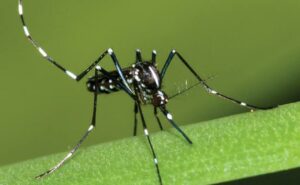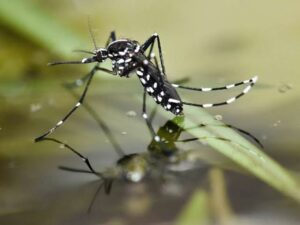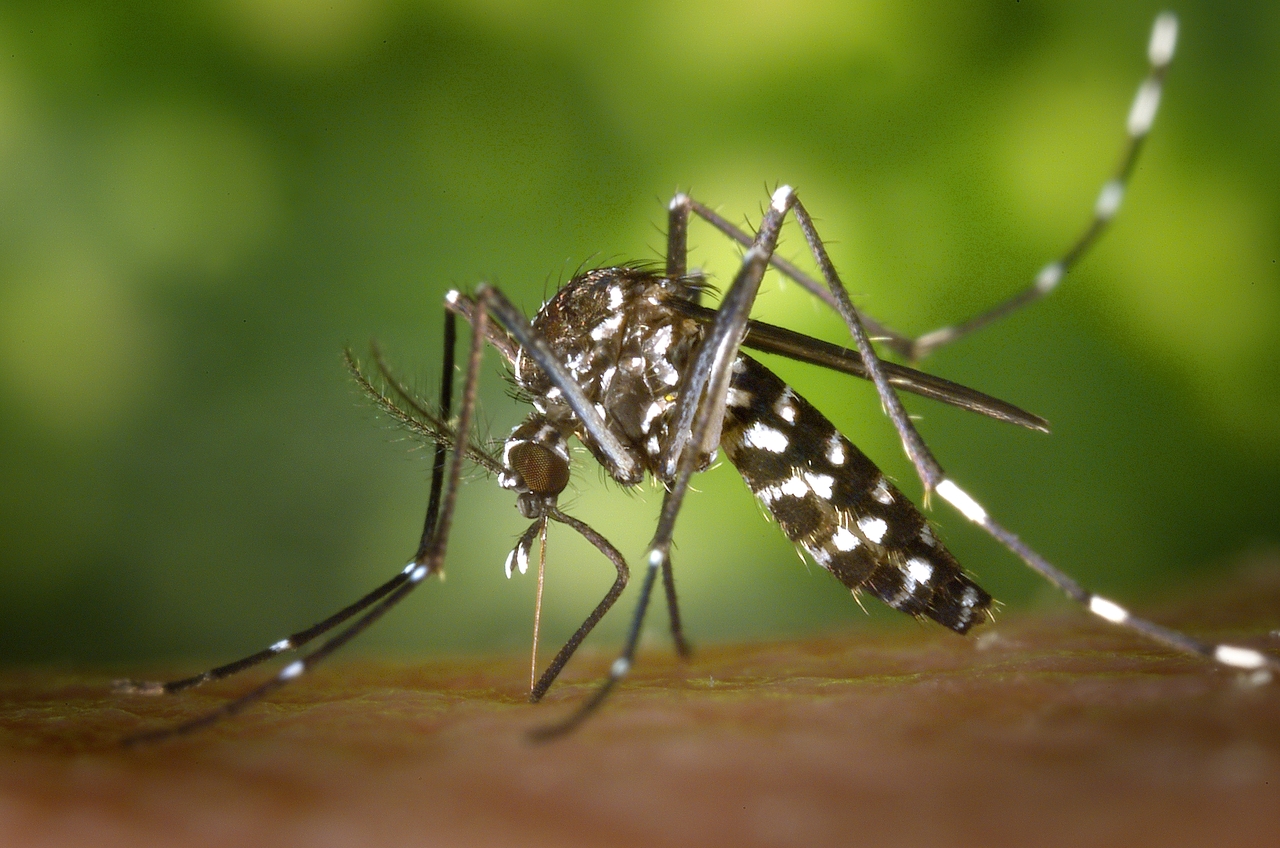An Asian Tiger Mosquito, also known as forest mosquitoes, is a specific species characterized by its exotic nature and the distinctive single white stripe running down the center of its head and back, giving it the “tiger” name. Originally native to Southeast Asia, these mosquitoes are daytime biters and have the potential to transmit various harmful diseases, including Eastern Equine Encephalitis (EEE), Zika virus, West Nile virus, Chikungunya, and dengue fever.
Asian tiger mosquito appearance
Asian tiger mosquito has a recognizable appearance:
- It has a black body adorned with silvery white markings.
- Their distinguishing feature isfered by a single, median silver-white stripe that runs from the head to the back’s center, along with legs that are striped in black and white.
- Male mosquitoes in this species have bushier antennae compared to females, which also contain auditory receptors to detect the characteristic buzz produced by the females.
Feeding Habits of Asian tiger mosquitos
When it comes to feeding habits:
- female tiger mosquitoes typically bite during the daytime. Although their bites may not be particularly painful, they can leave behind itchy, red bumps on the skin.
- In contrast, male Asian tiger mosquitoes do not bite; they primarily feed on plant nectar.
Where to found Asian tiger mosquitos?
Asian tiger mosquitoes can be found in warm regions where they remain active throughout the year.
- In temperate climates, they are known to overwinter.
- Females of this species lay their eggs inside objects that can collect stagnant water, such as tires, flowerpots, birdbaths, and clogged drains.
- These mosquitoes exhibit unique feeding habits compared to other mosquito species, as they primarily feed during daylight hours.
- Similar to other mosquito species, only female Asian tiger mosquitoes need a blood meal to lay eggs.
- Eggs are deposited in containers holding at least half an inch of stagnant water, including items like tires, flowerpots, birdbaths, and clogged drains.
- Consequently, even small objects like bottle caps can serve as breeding sites providing adequate water for the larvae to develop. Breeding locations are likely to be in close proximity to where the adult mosquitoes are found.

Facts About the Asian Tiger Mosquito
The tiger mosquito is a formidable pest with a significant impact on public health, Here are some key facts about this tiny but dangerous insect:
- Easily recognizable by its black and white striped body and legs.
- Unlike many mosquitoes, the Asian tiger mosquito is most active during the day.
- Known for its persistent biting behavior.
- Can transmit various diseases, including dengue, Zika, chikungunya, and West Nile virus.
- Breeds in small containers of standing water, making it adaptable to urban environments.
- Originally from Southeast Asia, it has spread worldwide through human activities.
- Can survive winter in the egg stage, hatching when warmer temperatures return.
- The spread of diseases transmitted by the Asian tiger mosquito can have significant economic consequences for affected areas.

How to prevent Asian tiger mosquito bites
Preventing Asian tiger mosquito bites is essential to safeguard your health. Here are some effective strategies:
Repellents
- Choose an EPA-registered repellent, Look for products containing DEET, picaridin, oil of lemon eucalyptu.
- Apply repellent as directed.
- Repellent effectiveness can diminish over time, especially if you’re sweating or swimming.
- Instead, spray your hands and rub it on your face.
- Wear long sleeves and pants, This physical barrier can help deter mosquitoes.
- Choose light-colored clothing,Dark colors tend to attract mosquitoes.
- Tuck pants into socks, This prevents mosquitoes from accessing your ankles.
- Consider permethrin-treated clothing, This provides additional protection against mosquitoes.




